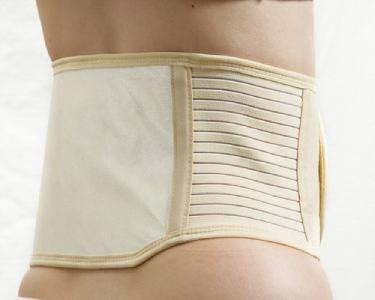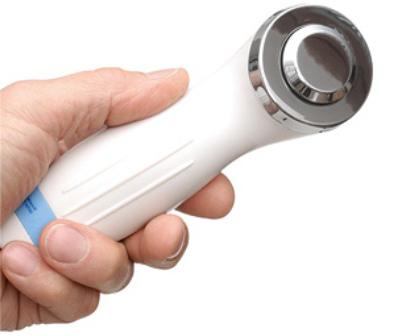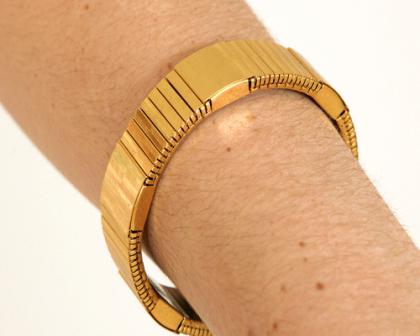Recently, natural methods have been increasingly used to strengthen the body and treat various diseases. One of them is magnetotherapy (magnet physiotherapy). This method of treatment consists in the effect of magnets on the body. Such therapy is not a folk remedy, but is one of the most effective areas of modern medicine. Medical technologies are constantly developing, high-quality mobile devices are being created, and today it has become possible to carry out such a procedure as magnetotherapy at home.
Historical reference
The founder of this therapy is considered to be the Swiss physician, philosopher and alchemist Paracelsus, who discovered in the 16th century that magnetotherapy can be used for various diseases. Treatment in this way was used for epilepsy, diarrhea, bleeding. It has been proven that by combining magnetotherapy with drugs, it is possible to accelerate burns, as well as reduce pain of various kinds. Over time, interest in magnetotherapy has increased. There have been numerous studies in this area. However, in the 20th century, due to a huge breakthrough in the field of pharmaceuticals, magnet therapy began to be gradually forgotten. Today, interest in treatment without drugs has returned, and such a method as magnetotherapy is gaining more and more popularity (indications for the use of this method of treatment will be described below).
Properties of magnetotherapy
Due to its special biological activity, it is able to provide a preventive and healing effect on the human body. Thanks to the healing properties of the magnetic field, the energy of the body's micromolecules increases: proteins, nucleic acids and other compounds. The speed of biological processes and reactions in the body also increases. Each person is different, and the effect of magnetic procedures in each case is different. Due to magnetotherapy, the work of all body systems is normalized. The function of an organ working in excess of strength decreases, if the organ does not work enough, its activity, on the contrary, increases. If pathological processes develop in the body, then they are converted into reverse ones. In comparison with a constant magnetic field, the variable one has a more pronounced healing effect. As a result of the effect of the magnet on the body, blood circulation improves and many vital processes in the body are activated.
Methods of exposure
There are the following magnetotherapy techniques:
pathologies of the cardiovascular system, such as ischemic and hypertensive heart disease with stable angina pectoris;
rheumatism, vascular dystonia, postinfarction cardiosclerosis - in this case, the treatment takes into account the individual characteristics of a particular patient, the dynamics of the disease, data of clinical and functional examination;
deviations in the peripheral and central nervous system, spinal cord and spinal injuries of various nature, circulatory disorders in the spinal cord, ischemic cerebral strokes - in such situations, a detailed examination of the patient is necessary, after which the attending physician will give instructions on the advisability of using magnetotherapy;
ostechondrosis of the spine, neuroses, neurasthenia, neuritis, neuralgia, polyneuropathy, ganglionitis, phantom pain, various paralysis and cuts;
peripheral vascular diseases - atherosclerosis obliterans, thromboangiitis, obliterating endarteritis, Raynaud's syndrome, chronic venous and lymphovenous insufficiency, deep and superficial vein thrombophlebitis, diabetic angiopathy, consequences of aorto-femoral shunting;
injuries and diseases of the musculoskeletal system - bursitis, infectious-toxic arthritis, epicondylitis, polyarthritis of various origins, deforming osteoarthritis, periarthritis, various fractures requiring application or a plaster cast, bruises, dislocations, sprains;
bronchopulmonary diseases - lingering and acute pneumonia, chronic bronchial asthma and bronchitis;

disorders of the digestive tract - chronic pancreatitis, stomach and duodenal ulcers in remission or exacerbation, chronic and acute hepatitis, cholecystitis, colitis, obstruction of the biliary tract, for these diseases, magnetotherapy at home can also be used for prophylactic purposes;
ENT diseases - all kinds of rhinitis, rhinosinusitis, chronic pharyngitis and sinusitis, tracheitis;
ophthalmic diseases - keratitis, conjunctivitis, iridocyclitis, atrophy of the optic nerves, the first stage of glaucoma;
gingivitis, acute arthritis of the temporomandibular joint, ulcerative formations on the oral mucosa, fractures, wounds and injuries of the jaw;
cystitis, adnexitis, prostatitis, urethritis, impotence, infertility, fibroids, fibromas, hormonal disruptions in the body;
skin diseases and allergic reactions;
ulcers, burns, bedsores, frostbite, decreased protective functions of the body.

Contraindications to the use of magnetotherapy
Contraindications to the procedure can be absolute and relative.
In no case should magnetotherapy be performed with:
bleeding and tendency to it;
systemic blood diseases;
acute thrombosis;
aneurysm of the heart, large vessels, aorta;
cardiovascular insufficiency;
severe angina pectoris;
severe heart rhythm disturbances;
mental disorders;
acute myocardial infarction;
infectious diseases of the acute stage;
depletion of the body;
gangrene;
individual intolerance.
Relative contraindications for the procedure:

Pulse magnetotherapy
During the procedure, high intensity magnetic field pulses are used for treatment. In living tissues of the body, magnetic impulses induce eddy electric currents, due to which the stimulation of the nerve fibers of the internal organs and blood vessels is carried out, the outflow from the foci of inflammation improves, the vessels expand, the inflammatory edema decreases, and damaged tissues are restored. Pulse magnetotherapy is contraindicated in complicated forms of ischemic heart disease, cholelithiasis, acute thrombophlebitis, epilepsy, the presence of implanted pacemakers, acute purulent inflammatory processes.
Low-frequency magnetotherapy
This is a physiotherapy method that uses a low-frequency magnetic field (running, alternating, rotating, pulsating). This procedure is more suitable for home use, as it does not require external supervision by a specialist. Low-frequency magnetotherapy activates molecules in cells, thereby accelerating all metabolic processes in tissues: increased blood flow, accelerated healing of damaged tissues. There is a decrease in vascular tone and pressure normalization. Resistance to stress, physical exertion, and adverse effects increases. The procedure of low-frequency magnetotherapy, in addition to the above general contraindications, is not carried out with pronounced hypotension, the presence of implanted pacemakers, individual hypersensitivity to the acting factor.

After reading this article, you learned more about such an effective method of treatment, such as the procedure, the types and features of the conduct.
Contact (stable or labile). When stable, inductors are installed motionlessly on the skin in the projection of the pathological zone. When labile - smoothly move in the area of the focus of damage.
Remote. A minimum air gap is left between the inductor and the affected area.
Abdominal. The procedure is performed vaginally or rectally.

Magnetotherapy: devices for the procedure
The essence of the procedure
During magnetotherapy, the sore spot and adjacent tissues are heated by 2-3 ° C to a depth of 9-12 cm. This effect accelerates blood circulation in the damaged area, due to which the edema associated with inflammatory processes is absorbed, cellular immunity is increased, and the recovery mechanism is activated.
Magnetotherapy rules
The treatment rules are quite simple:

Magnetotherapy: indications for the procedure
This method of treatment has a large list of indications for ailments of the whole organism. Home magnetotherapy is used for:

